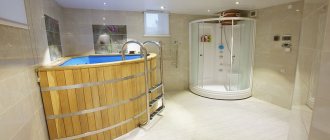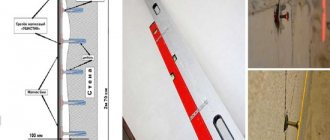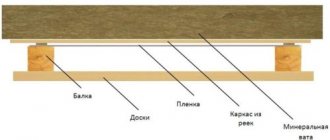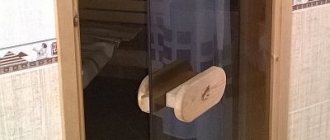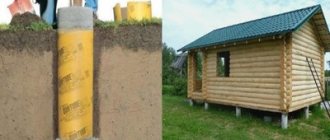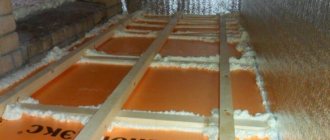Simultaneously with the invention of the office stapler, construction models appeared. Soon the conventional mechanical device was supplemented with an improved electrical version. Both in the office and in construction, the stapler has gained wide popularity. This is a tool that furniture makers cannot do without. If there is a need to purchase this device, then first we will figure out what types of staplers there are and how they differ.
Types of staplers and their purpose
A construction stapler is a device that is used to fasten various materials using special staples. This device is also called a staple gun, staple gun, staple gun, or even a pistol. The tool is popular not only among furniture upholsterers, but also among workers in various fields. It is always useful in the household, because with its help you can quickly and efficiently connect two different parts.
Construction staplers are divided into types based on the type of drive. What they are and how they differ, we will find out further:
- Mechanical is the most common type of device, which is popular not only among home craftsmen. The device is activated by applying physical force. The denser the material into which the staples are hammered, the more effort a person needs to put in. A mechanical stapler is characterized by its small size, low cost and lack of connection to an electrical network or compressor
- Electric - the principle of their operation is the use of electricity. The staples fire when the trigger is lightly pressed. The physical effort required to fire staples in mechanical staplers is replaced by an electric drive. It should be noted that electrical appliances are divided into mains and battery-powered. Mains ones require connection to an outlet, while rechargeable ones are more bulky and require regular battery charging.
- Pneumatic - if mechanical ones use physical force, and electric ones use the force created by an electric motor, then in pneumatic ones, the main drive device is compressed air. This air is supplied from a compressor, so the stapler is tied to the equipment, which makes it inconvenient to use. If electrical and mechanical models are used not only by specialists, but also by home craftsmen, then pneumatic devices are often used only by professionals. The advantage of the tool is its relatively low cost, which is higher than mechanical ones, but less than electric ones.
For home use, a mechanical stapler is sufficient, which, unlike an electric one, can be used in any conditions. Such devices are unpretentious, affordable and provide high reliability of work. It is about manual staplers that will be discussed in the material.
How does a mechanical device work and the principle of its operation?
The tool in question is activated by applying physical effort. That is why this device is also called a manual stapler. Its design and operating principle differs from that of a stationery device. Construction tools develop a lot of force, which is necessary for fastening or securing materials. According to the design of the drive mechanism, products are divided into two types - with a coil spring and a leaf spring. The main structural elements of a construction stapler:
- Housing - often made of steel, inside which working parts and mechanisms are located. The body has a recess for your hand, which allows you to hold the device during use.
- Handle - connects to the impact mechanism, charging the spring and then firing the staple. It is this handle that the user must exert physical force on to operate the tool.
- The impact mechanism is the basis of the tool, since it is through this device that the staple is fired. The impact mechanism consists of a spring, a hammer, a shock absorber and a striker. The striker acts on the staple, pushing it out and driving it into the material. An integral element of the impact mechanism is also an adjusting screw, through which the force on the bracket is adjusted
- The compartment for installing fasteners is a special channel into which staple cartridges are installed. The ramming mechanism plays an important role in the design of the compartment. This is a special device that pushes the magazine with staples towards the striker as they are used
- Tip - hole through which staples are fed for driving them
- The latch is not the main element of the device, which is intended for transporting the tool. It fixes the handle in an inoperative state, thereby preventing accidental impact on it
A detailed diagram of the structure of a construction stapler is shown in the photo below.
Externally, all mechanical staplers have the same design, but the internal working mechanisms differ in design. The main difference is in the design of the impact mechanism, which is implemented using a conventional coiled and leaf or spring spring. How they differ from each other is described in detail.
- A coil spring staple driver is a common type of stapler that falls under the category of household tools. Their main disadvantage is that they have a large load and recoil force. Long-term use causes physical fatigue in the hands, so the tool is not intended for prolonged use.
The principle of operation of such a stapler is that the handle engages with the striker, thereby moving it upward, overcoming the resistance of the spring. The more the spring is compressed, the stronger the impact on the bracket. When the striker reaches the maximum upper position, it jumps off the handle mount, and thereby it moves downward at high speed, hitting the bracket with the striker. The staple, under the influence of the striker, shoots out of the tip, entering the material. You need to know the operating principle of a construction stapler in order to be able to eliminate its breakdowns when they occur.
- Staple hammer with leaf spring - these staplers belong to the category of professional tools. They are characterized by smooth operation, increased service life, and also higher cost compared to household type staplers. However, this does not mean at all that such a stapler is intended exclusively for professional use. If you plan to use the tool frequently, it is better to take a device with a leaf spring.
The principle of their operation is similar to devices that consist of a coiled spring. When you press the handle, the flat striker moves with simultaneous deformation of the combat plate. As soon as the striker reaches the maximum upper position, it will return to its original position with instantaneous speed. This is achieved due to the fact that the plate tends to take its original position. The hammer, returning downwards, impacts the firing pin, and the latter, in turn, strikes the bracket. Such devices are also equipped with force regulators. They have a more complex design, which is reflected in their cost.
The difference in price between these tools is significant, as is the service life. Before you buy a mechanical stapler for driving staples, you should answer the questions - what is the tool for and how often do you plan to use it.
This is interesting!
You can distinguish a stapler with a coil spring from a device with a plate externally by such a characteristic feature as the location of the adjusting screw. On devices of the first type, the screw is located on top, and on devices of the second type, the adjusting washer is located on the handle.
Technical characteristics of mechanical staplers
Knowing the structure and operating principle of mechanical type construction staplers, it is also necessary to understand their basic design characteristics. These characteristics include:
- Material - what the stapler body is made of. The most commonly used material is steel, while cheaper options are made from aluminum alloy. The simplest are products made of impact-resistant plastic, but they are not intended for frequent and prolonged use. The handle of steel and aluminum staplers can be covered with a rubber or polyurethane layer
- Dimensions and weight - all mechanical staplers are compact, so there are no difficulties with their storage and transportation. The length of the devices ranges from 155 mm to 230 mm, and the height varies from 120 to 200 mm. The width of 25-35 mm not only characterizes the dimensions of the tool, but also the possibility of using staples of different sizes. Hand-held models weigh from 300 to 800 grams, and if the device body is plastic, then their weight is even less
- Impact force - this parameter for manual staplers is the lowest compared to electric ones, and even more so, pneumatic ones. The impact force is regulated by a special screw, which is equipped with all models of staplers
- Impact frequency or rate of fire - this parameter is measured in the number of staples driven in one minute. For hand tools this figure is the lowest. Electric models show the following results - from 20 to 50 staples per minute, and the most highly productive are pneumatic counterparts, which fire 50-60 times per minute
- The depth of driving the staples - this parameter depends on the impact force of the tool, as well as the type of material for driving the staples. Mechanical staplers are capable of driving 10-15 mm staples, while their modern rivals, electric and pneumatic devices, can handle 50 and even 100 mm fasteners. However, on the farm there is rarely a need to connect various parts using such long staples, especially since it is much more reliable to make the connection using self-tapping screws
It should be noted that manual staplers are designed for driving staples into hard surfaces. Often these are wood, plywood and plastic. The need to use a stapler arises when there is a need to attach woven materials to solid substrates. In addition to the fact that the stapler copes with this task quickly, the resulting result is also decorative, which is why these tools are widely used in the field of furniture construction and repair.
Unlike mechanical devices, electrical and especially pneumatic devices allow you to attach soft materials to hard ones, and even provide a connection between two hard surfaces. For such purposes, staples of appropriate thickness and strength are used. We will learn further about what types of staples for construction staplers are produced.
The most powerful office staplers
Powerful staplers are designed for stapling large volumes of paper in libraries, archives, clinics, law firms, etc. They are usually made of metal, have large dimensions and increased strength. These models stitch up to 260 sheets at a time and have a special bar that allows you to select the binding depth.
Kangaro DS-23S15 FL
5
★★★★★
editorial assessment
100%
buyers recommend this product
The metal-plastic Kangaro with a reliable mechanism allows you to stitch up to 120 sheets at a time. The device is equipped with a rubberized holder and is easy to handle. The design has a special compartment for paper clips and a bar that fixes the paper at the required length.
Advantages:
- durable materials;
- thoughtful design;
- front loading button;
- does not require much effort;
- rubberized inserts.
Flaws:
- high price.
Kangaro DS-23S15 FL will prove itself perfectly in the office, accounting department and in any offices through which a lot of paper documentation passes.
Attache stapler professional
4.9
★★★★★
editorial assessment
95%
buyers recommend this product
A particularly powerful device stitches up to 200 sheets with a density of 80 g/m2. The paper laying depth varies from 7 to 60 mm. The plastic sole does not slip and does not leave scratches on the tabletop. Staples are loaded horizontally. The length of the device is 28 cm and there is a container for paper clips.
Advantages:
- all-metal internal mechanism;
- silent operation;
- productivity;
- excellent build quality.
Flaws:
- heavy weight (1 kg 600 g).
The Attache professional stapler is an ideal device for stapling business paper documents in large companies.
Horn stapler gray-blue
4.9
★★★★★
editorial assessment
95%
buyers recommend this product
The reliable Horn stapler is made of metal and has blue plastic inserts with corrugation on the handle. There is a ruler and a front loading button. The light gray matte device, 42 cm long, staples up to 200 sheets at a time. Model weight 2 kg.
Advantages:
- adjustable stitching depth;
- strong mechanism;
- functionality;
- long service life.
Flaws:
- expensive and heavy.
Horn's gray and blue stapler folds staples inward only and quickly staples large quantities of documents.
Brauberg Leistung
4.9
★★★★★
editorial assessment
94%
buyers recommend this product
The Brauberg Leistung stapler is designed to punch 100 sheets of paper, while working with it requires 60% less effort than usual. There is a ruler here to adjust the stitching depth individually.
The length of the case is 21 cm. The staples are loaded horizontally. Suitable staples: No. 23/10 and No. 23/13, No. 23/8 and 24/8, No. 24/6 and 26/6.
Advantages:
- metal-plastic body;
- presence of a ruler;
- device for pulling out staples;
- stylish appearance.
Flaws:
- only closed stitching type.
Brauberg Leistung has a built-in destapler, so the owner does not need to purchase an additional device for removing unnecessary staples from paper.
Index stapler for 240 sheets, staple No. 24/6, 23
4.8
★★★★★
editorial assessment
92%
buyers recommend this product
Super-powerful Index binds 240 sheets of paper. The metal body is equipped with a lever that performs the main operating function. There is also a retractable ruler that regulates the loading depth, as well as an automatic feeding mechanism for the container for staples. The wide bottom is covered with anti-slip material. Stapler weight: 1 kg 400 g.
Advantages:
- convenient compartment for staples;
- stylish design;
- closed and open fastening;
- simple controls.
Flaws:
- There are no rubberized inserts on the lever.
Index guarantees high performance. Suitable for people who regularly work with documents and value their time.
Staff Powerful №24/6-23/13
4.7
★★★★★
editorial assessment
87%
buyers recommend this product
Staff is designed to simultaneously staple 70 sheets of standard weight paper. The ergonomic shape guarantees comfortable and high-quality work, and the steel ruler allows you to independently determine the stitching depth. The case is black, the model weighs 0.8 kg. The handle lowers silently and easily.
Advantages:
- front loading;
- good power;
- wide base.
Flaws:
- no rubber inserts.
Staff can withstand significant loads and is successfully used in offices and printing houses. A good device for an adequate price.
Material for making staples for a stapler
Manufacturers produce staples from various materials, which allows them to expand their scope of application. They come in the following types:
- Aluminum - used for working with non-solid types of materials
- Copper - these staples are also called decorative, as they are intended for covering furniture with various types of fabrics
- Steel ones are the most popular and inexpensive. They can be used for driving not only into soft, but also hard materials. The main disadvantage is that they rust over time.
- Stainless - made of stainless steel, and used when it is necessary to prevent the occurrence of corrosion processes
Additional zinc coating of the brackets eliminates the occurrence of corrosion processes. When choosing fasteners of the appropriate material, it is necessary to take into account what you plan to connect.
What is a stapler?
A construction stapler (furniture stapler, stapler) is a hand-held tool for fastening various elements. According to the principle of operation, it differs little from a conventional office stapler, because in both cases, the fastened elements are connected with staples (usually U-shaped).
However, if a stationery tool pierces through the materials being joined and bends the ends of the staple, fixing the fastening, then its construction counterpart drives the ends of the staple into the base according to the principle of nails.
What is it needed for?
A construction stapler can be used for the following work:
- furniture upholstery - any type of fabric, leather, suede, microfiber, etc.;
- fixing insulation, vapor and waterproofing during installation of floors, walls, ceilings;
- attaching posters and photo wallpapers to walls and billboards;
- fixing back walls made of fiberboard, hardboard, plywood and other cast materials in cabinets;
- assembly of packaging structures, stitching of corrugated cardboard;
- installation of glazing beads on window frames;
- installation of tongue and groove boards on the floor and fastening of the floor covering;
- installation of greenhouses and greenhouses;
- fastening cables and wires;
- cladding with polymer boards and draping with fabric;
- other installation and finishing works.
Essentially, the stapler is designed to replace fastening methods such as hammering small nails and gluing.
It has the following advantages:
- large pressing area compared to nails, which increases the reliability of the connection;
- simplicity and accuracy of fastening, less likelihood of elements moving relative to each other when connected;
- acceleration of the process and mechanization of labor;
- possibility of use in hard-to-reach places;
- fastening of various elements, regardless of the material, which compares favorably with glue, which must be selected;
- versatility.
Fasteners for staplers according to shape
Staples for construction staplers come in different shapes, which is done specifically in order to expand the scope of their application. The following varieties are distinguished:
- U-shaped
- U-shaped
- T-shaped
U-shaped and U-shaped staples have almost the same shape, but their scope of application is radically different. U-shaped devices are the most popular and are used almost everywhere. U-shaped devices are used in the field of electrical work. With their help, cable lines are secured during their installation. T-staples are an alternative replacement for nails, but they don't require you to hit the head dozens of times to get it into the surface. A distinctive feature of T-shaped staples from nails is that the former have a rectangular or square head shape.
Additional options
When buying a stationery stapler, few people might think that it can be further improved. However, this is not the case , and this is confirmed by new models that manufacturers regularly release in order to improve their ease of use.
- If you want to get one of these models at your disposal, we recommend that when choosing a stapler, make sure that there is a plastic footrest or rubberized inserts at the bottom of the body. They will help protect the table surface from scratches and other mechanical damage.
- Some models can be additionally equipped with such a useful device as a destapler. Its main purpose is to straighten staples. It may be required if you decide to separate sheets of paper that were once fastened together. Of course, you can use scissors or nails for this, but this is not very convenient, and after such a “barbaric” method, the sheets will no longer look as aesthetically pleasing as before.
The hardness of staples and what it affects
The greater the hardness of the consumable, the higher the efficiency of its penetration into the surface of the driven material. To understand why staples of different hardnesses are produced, you need to imagine a picture when it is necessary to drive a staple into a board made of hard wood. A soft aluminum or copper staple will not penetrate the surface of such wood. The result is a damaged bracket with bent legs. To prevent this from happening, manufacturers produce consumables with the following hardness names:
- Simple
- Very hard
- Red-hot
A description of the degree of hardness of the staples is presented in ascending order. The ends of the devices may have additional sharpening, which allows for effective insertion of the part into the surface of solid materials with the least resistance.
Marking of staples for a stapler and features of choice
In brackets with fractions, such as 24/6, the value 24 determines the number of these products per inch. The lower the number per inch, the thicker the wire from which the staple is made.
The second digit in the fraction is the length of the leg in mm. When choosing an element for fastening, you must first know in advance the thickness of the papers that need to be punched. To do this, you should press it down a little and take a margin of 3-4 mm for the hem.
The “Kantskorally” store, located at st. Rishelievskaya, 40. For more details, please call: +38.
Dimensions of fasteners for construction staples, their purpose and application
Often, when purchasing a mechanical stapler, a set of staples is included with it. These devices come in different sizes, which must be considered depending on their application. Moreover, they differ not only in the length of the back and the height of the legs, but also in thickness. When purchasing them, you can see that the packaging contains the following designations:
- a—thickness
- b - width
The most popular types of staples are the following:
- 53 is the most common version of products, which have a thickness of 0.7 mm and a width of 11.4 mm. Leg height from 4 to 14 mm is selected depending on the task at hand
- 140 - such products have a thickened shape of 1.2 mm with a back width of 10.6 mm. The height of the legs also ranges from 4 to 14 mm
- 36 - this marking indicates that the package contains U-shaped brackets for securing the cable
- 300 are nails for a special staple gun
Below is a table of staple sizes from different manufacturers.
How to choose a device: advice from professionals
To choose the optimal stapler, you need to solve the following problems for yourself:
- frequency of use of the tool: every day or from time to time;
- places of use: indoors, outdoors. Is there electricity there?
- Do you need precision driving of equipment;
- materials you plan to work with.
Depending on the purpose and working conditions, choose the type of stapler:
- for infrequent work with non-solid materials, a mechanical stapler is suitable;
- If you don't need precision in installing staples and have the ability to swing, then consider choosing an impact stapler. He's light. Attached to the mounting belt;
- for a large amount of work in places where mobility is needed, take a closer look at a cordless tool;
- if you work indoors with an outlet and don’t want to overpay for the battery, buy a stapler with a mains connection;
- If you need a stationary powerful device, don’t hesitate to take a pneumatic tool.
What characteristics to look for when choosing a stapler:
- presence of impact force regulator. A mechanical tool has two types of regulation: minimum and maximum or smooth adjustment. Electric has up to 6 modes. The setting is made using a software switch. The thinner the material, the less the impact force, otherwise dents will form;
- Double punch. Only electric staplers have it. For hard materials, large equipment is used that will not clog immediately. The double strike mechanism itself determines this and works a second time. If there is no such mechanism, then you will not immediately see that the nail heads are not completely hammered in;
- removing fasteners using a stapler. If this function is available, then to remove poorly hammered equipment you will not have to do it manually or with a nail puller;
- body material. Structural steel staplers weigh more than plastic ones;
- rubber inserts on the handle. Their presence reduces the recoil of the tool, and the hand gets less tired;
- Battery type: nickel-cadmium suitable for low temperatures. But they have a memory effect, so they discharge quickly. They are used in inexpensive models;
- lithium-ion. They hold a charge longer, but are less resistant to mechanical stress;
- nickel metal hydride. Lightweight and have a long charge life;
Selecting staples for a stapler
When purchasing staples, you should know which staples will fit your stapler. The type of equipment is indicated on the packaging, in the instructions and on the tool body. Staples have characteristics that must be taken into account when choosing:
- form. It can be U-shaped or semicircular.
The latter is used for cable installation; Staple shape - type of sharpening of ends: sharpened. Hammering such staples requires less effort;
- unsharpened. They jam more often and do not always clog completely;
- height H;
Staple dimensions
The most common consumable is U-shaped brackets marked “Type 53”. They have found their application in upholstering furniture with textile materials and in joining products made of wood, plywood, chipboard and hardboard. Type 140 staples are in second place in demand. They are shorter and thicker. Due to the increased contact area with the material being joined, the likelihood of material rupture at the point of attachment to the base is reduced. Therefore, they are convenient when working with thin parts: fabrics, PVC film, as well as wood, plywood, chipboard and hardboard. There are two types of semicircular staples.
Types of semicircular staples
| Bracket type | Cable diameter, mm | Thickness, mm | Height, mm |
| S (28) | 4,5 | up to 1.25 | from 6 to 10 |
| L (36) | 6 | 1,25 | from 9 to 11 |
Two characteristics are important for a stapler: shape and size. And you choose the type of sharpening for yourself. By the size of the equipment you can judge the purpose of the stapler.
Examples of types of staples and nails for staplers
| Equipment type | Description | thickness W, mm | width L, mm | height H, mm |
| Type 13 (H/19/37) | Flat metal staples | 0,7 | 10,6 | 6–14 |
| Type 53 (A/3/530) | Thin metal staples | 0,75 | 11,4 | 4–18 |
| Type 140 (G/4/11) | Thin metal staples | 1,25 | 10,6 | 6–14 |
| Type 48 | Nails | 2,8 | 1,65 | 14–25 |
How to use a construction stapler correctly
Before using the tool, you must first select the appropriate type of brackets and install them in the device compartment. To charge a new fastener, the following manipulations are carried out:
- The first step is to block the device handle from accidentally pressing it.
- At the back of the tool there is a special hatch with a rod and a pusher (removal mechanism), when removed, a compartment opens for installing a cartridge cassette of staples
- The cassette is installed inside the compartment, turning it so that the legs point down
- Next, we return the ramming mechanism to its place, thereby pressing the staples
- The handle is removed from the safety lock
- The tool is ready for use. Now you can make a few test shots to make sure the device is working.
In a similar sequence, staples of different sizes and shapes are installed or charged. However, before installing the appropriate fasteners into the tool, you must make sure that it is designed to work with them.
After this, you can begin to use the construction stapler for its intended purpose. It is not difficult to work with a furniture stapler, and the only regulator is to adjust the impact force. If, when you try to drive in the staple, it does not go in all the way, then you need to rotate the adjuster in a clockwise direction. If the fastener is deeply recessed inside the material, then it is necessary to loosen the spring pressure.
This is interesting!
When the staples in the gun run out, it is not recommended to click the handle idle.
The mechanism of the tool wears out with each blow, so the device will not last long in this case. Features of adjusting the impact force for household and professional staplers:
- Features of setting household staplers - tightening the screw clockwise helps compress the spring. As a result, the staples are fired with greater force, which will also contribute to its penetration deeper into the material. If you turn the regulator in the opposite direction, the blow will be weaker
- Setting up a professional stapler - the regulator is located near the handle. When it rotates, the impact force also increases or decreases. The tool needs adjustment every time the material being processed is changed.
The tool is considered to be correctly adjusted when the staple is completely inserted into the material. You should start using the tool only after the impact force has been correctly adjusted.
This is interesting!
Often, during the operation of a furniture stapler, a situation arises when the staple does not completely enter the material. The reason for this phenomenon is that the spring wears out. If you adjust the impact force of the screw to the maximum value, and the fasteners do not go in completely, then the tool needs repair.
Device repair
If, after several months of active use, your pocket or desktop stapler breaks down, then it would be better to purchase a new one instead . But sometimes problems occur with this tool that can be fixed without resorting to drastic measures.
- First, you should disassemble the tool - to do this, remove the body and pull the clip out of the groove. This will help you make sure that there are some stuck staples at the exit point that are preventing the unit from working properly. Most often, it is because of this that staplers stop functioning normally.
- To restore the functionality of the device, you need to remove all stuck staples. To make this easier for you, we recommend using tweezers or a thin screwdriver. But be careful not to hit the groove, spring and pusher, which can be broken very easily.
- Now you can start assembling the stapler. First, install the spring in its original place, followed by the housing and press on the upper part, first aligning it with the lower one, with such force that they are connected.
Which construction stapler is better?
Today, a lot of construction staplers are produced, which differ not only in their external design features. They differ in performance and resource. However, one can argue with these words, because the duration of the resource depends on the features of using the tool. Before you buy a construction stapler for your home, it is recommended that you familiarize yourself with the popular models that received the highest rating in the rating - inexpensive and high quality. You can choose which construction stapler is better by yourself by familiarizing yourself with the models presented below:
- STAYER 31510 is an inexpensive and very effective household type stapler. Despite the German name, this instrument is produced in China. It is distinguished by high reliability and reliability. Reviews show that the device is resistant to various negative impacts - falls and shocks. The handle has a rubberized layer, which eliminates the possibility of calluses forming during prolonged use of the tool.
- The whirlwind is a very powerful tool that can cope with any complexity of housework. It is used not only for upholstering furniture, but also for fastening sheet materials. It has a high impact force, which allows it to pierce plywood. This powerful household tool weighs 500 grams, which can be called a disadvantage. Another drawback is the rigidity of the handle, due to which greater impact force is achieved. Reviews show that the resource of the tool with frequent use is quite long, and if you need a reliable stapler, then you should take a closer look at the models from the Vikhr company
- Gigant is another reliable staple gun from the Chinese manufacturer. It has a simple design, which has a positive effect on its cost. The body material is coated with chrome, which ensures reliable protection against corrosion. Impact mechanism made of tool hardened steel ensures long service life of the tool
It should be noted that when choosing, one should take into account such a factor as cost. The higher the price for a particular model, it means the tool is made of higher quality materials and will last longer. If you once had to work with an electric stapler, then you are unlikely to consider mechanical models. However, it makes no sense to buy an electric staple gun if you plan to use it no more than a few times a month. If a mechanical stapler malfunctions, it will not be difficult to disassemble it and repair it yourself.
Stapling Types
Stationery staplers can be divided according to the method of fastening sheets. Among them, the most common option, which is often used by office workers, is closed-type stapler devices. During operation, this tool bends the edges of the staple inward. This method provides the most reliable connection of sheets. Therefore, it is not surprising that such staplers are the most popular.
There are also open type staplers. They differ from devices with a closed stitching method in that they bend the staples outward. They are indispensable when you need to temporarily stitch paper sheets. Subsequently, the fastened sheets can be easily separated, and no traces remain on them.
Some office workers sometimes purchase staplers with straight staples for work. It makes sense to use them when there is a need to fix sheets of paper on a special board with a soft surface. For example , it could be a base made of cork.
Do-it-yourself repair of a construction stapler
Often during the operation of tools, their malfunction occurs. A mechanical stapler is no exception, repair of which may be required soon after purchase if the cheapest option is purchased.
Let's look at the features of repairing a furniture stapler using the example of a malfunction when two staples shoot out.
Why does the stapler shoot two staples, and is it possible to fix such a breakdown? First we need to figure out why it shoots two fasteners. The reason for this malfunction is the weakening of the clamping force of the staple cassette. The pressure is provided by the rammer. Over time, the spring loses its clamping properties, which leads to a defect when the device fires two staples at once.
You can fix this in the following way:
- For staplers with a spring type of spring, make a U-shaped plate and place it between the latch and the rammer. Such a plate will eliminate free movement of the rammer, and as a result the stapler will hit exactly one staple
- For staplers with coil springs, increase the force of the rammer spring. This can be done by adding spacers in the form of washers
A detailed description of the mechanical stapler repair process is presented in the video material.
No less popular is the problem when staples do not fly out of the stapler.
If in the first case the problem is solved without the need to disassemble the device, then here you cannot do without it. It is easy to disassemble the stapler, depending on its model. To do this, remove the cotter pin washers, and then disassemble the tool. Next you need to get to the impact mechanism, since the malfunction is associated with it. Repairing a construction stapler with a malfunction such as staples not firing is as follows:
- The sides of the striker are inspected
- There should be no licked areas where they come into contact with the handle. The presence of such indicates that the striker does not move to the upper position, but jumps off almost immediately when you press the handle
- The licked areas of the edges must be ground off with a grinder, after which we can assume that the tool has been repaired
- All that remains is to assemble it and check the proper functioning
Another type of failure of a mechanical stapler is when the staple shoots out in the shape of the letter “M”.
This type of fastening is not reliable, so the problem must be corrected as quickly as possible. We will consider the reasons for this malfunction and the features of its elimination below:
- If the staples jam in the shape of the letter “M”, then the reason is the development of the striker
- The firing pin is a plate that is connected to the firing pin
- This type of breakdown often occurs due to the fact that the firing pin is made of low quality steel. With prolonged use of the tool, abrasion of the end part of the striker occurs, which contributes to the creasing of staples in the shape of the letter “M”
- Alignment of the striker is carried out using a fine-grain file
- It is important to take into account that it is not recommended to remove a large amount of edge from the striker, as this will affect the reduction in impact force
After repairing the construction stapler, you can continue to use it. The instrument in question is distinguished by its versatility, for which it has gained wide popularity. In conclusion, it should be noted that, like any other type of tool, a furniture stapler needs lubrication. The impact mechanism is lubricated with lithol or grease, which reduces friction and therefore increases the service life of the device.
